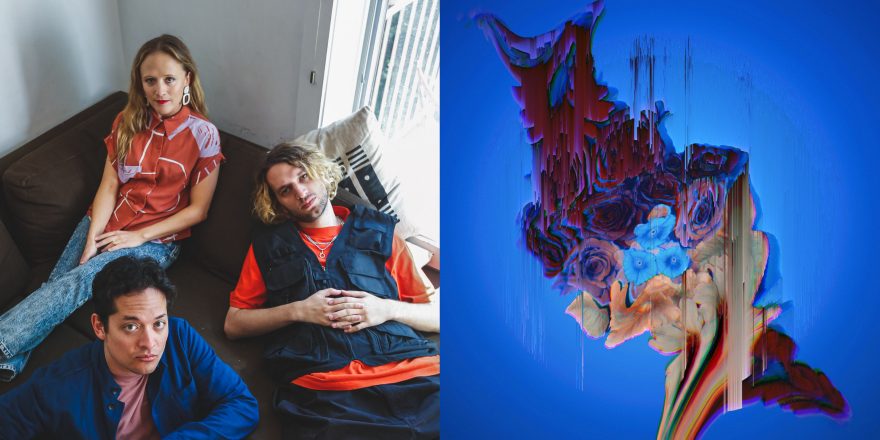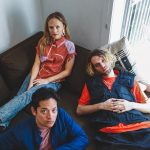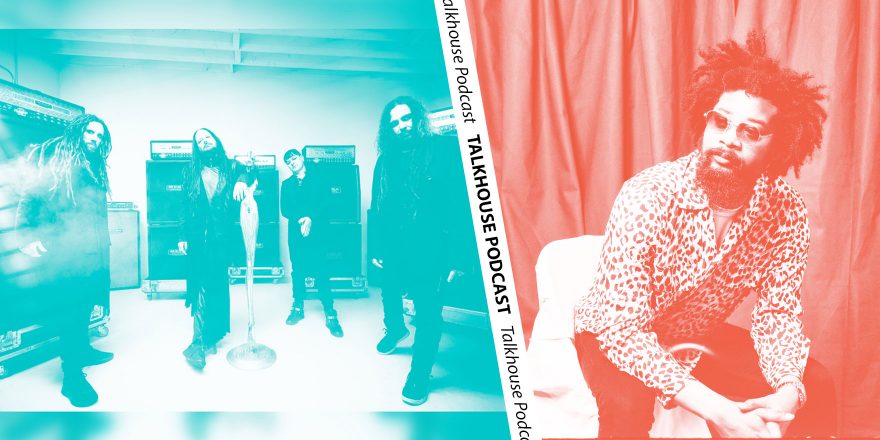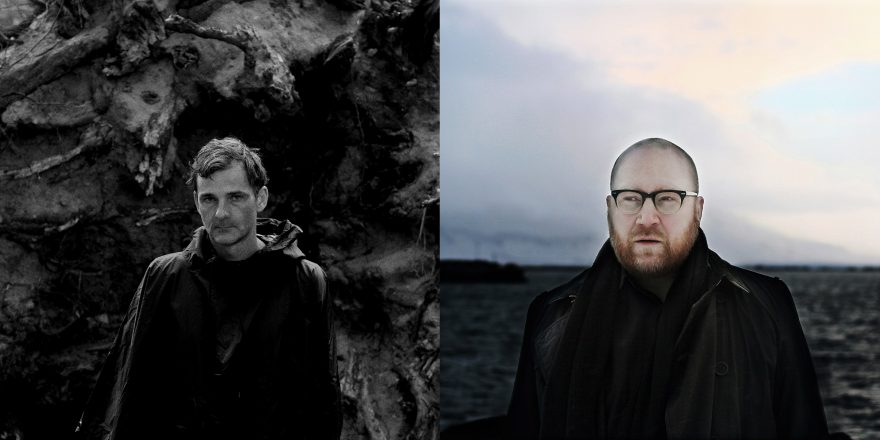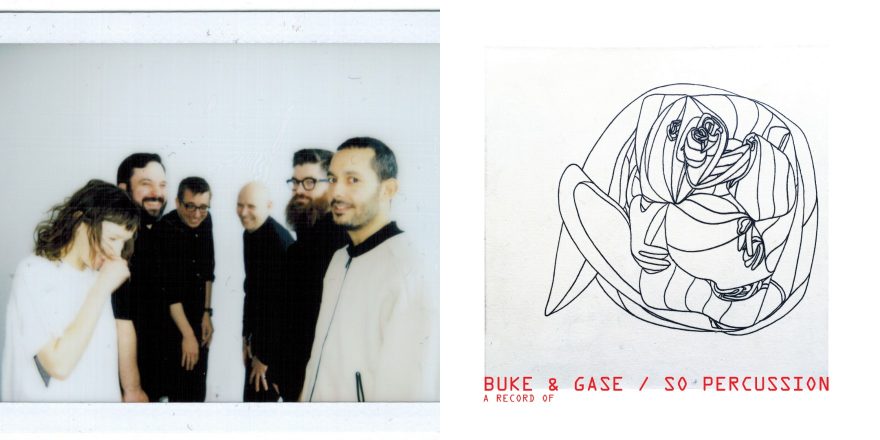Alec Hanley Bemis is the co-founder of the Brooklyn-based record label Brassland; Johan Lenox, Ellen Reid, and Yuga Cohler form the new collaboration isomonstrosity, along with Ellen Reid. The group’s debut self-titled record — which features contributions from Danny Brown, Vic Mensa, Empress Of, The National’s Bryce Dessner, and many more — is out today on Brassland, so to celebrate, Alec moderated a conversation between Johan, Ellen, and Yuga about the genesis of the project and more.
— Annie Fell, editor-in-chief, Talkhouse Music
Alec Hanley Bemis: How did you guys know each other before you made this record?
Johan Lenox: Yuga and I knew each other for a long time because we did classical music together in high school growing up outside of Boston. His dad coached a chamber piece I wrote, and we were at Tanglewood together in high school. And then we did a couple orchestral concerts a few years ago, basically recontextualizing different types of pop and hip hop music around the things that we thought were interesting about it from a classical music perspective; we did some stuff with Kanye, we did some stuff with K-Pop music. And we met Ellen through Lincoln Center, who I think they had a previous relationship, and we were all working on an idea for a show, an orchestral concert for 2020, which fell through. And then this kind of arose in the wake of that.
Ellen Reid: So, I got this really exciting email from two people who I didn’t know named Johan and Yuga. What was really exciting about it was that there was a fresh perspective about orchestral music that was going to be represented in the concert. We were talking about having my work in there alongside pop artists who would be writing orchestral work — so it wouldn’t be an orchestral version of a pop song, it was hearing this artist whose work we love, their orchestral imagination, which was really exciting to me.
The three of us really hit it off. We have a lot of shared interests, and when the pandemic hit, this concert was such a loss that we weren’t able to do it. And we started having conversations about music, and then we kind of posed the question: what is a project that you can only do right now that somehow synthesizes these interests? We came up with the idea of what became isomonstrosity.
Alec: Community-wise, I feel like [in] the classical world, everyone knows each other. It’s a very small pond. But actually working on a piece together seems pretty rare — is that true?
Ellen: So, usually when you write a classical work, there is one author. If it’s an opera or something, you would have an author, sometimes, of the text, and then a separate author of the music and orchestral work. It’s usually just one author and attributed to one person. I think what was exciting to me — and to a lot of the other more classically-leaning composers who are part of this project — is that we could write things that then got reimagined and got interpreted in ways that we would never think of, and that there was something really freeing in that, and really different that doesn’t exist so much in the classical world right now.
Johan: Yuga, you’ve commissioned composers in an orchestral context — [I’d be interested to hear about] your experience with collaboration in that world, versus how we’ve done our shows and then how that kind of led to this.
Yuga Cohler: Yeah, I mean, I’m the only non-composer on this project, right? I’m a conductor, which is, relative to a composer, an extraordinarily uncreative endeavor — by design. The platonic ideal of the conductor, a lot of people think, is you do exactly what the composer indicates robotically, basically reproduce magically whatever was in the composer’s head. And that’s, for me, not all that exciting, that kind of mode of conducting. So it was super cool to be able to work with two obviously great composers and artists in their own right.
And the process of collaboration: I mean, I had heard from Johan, who’s been working in pop a lot, how when you’re working on a song, it’s a pretty loose thing. You might start with some sound effect or really loose premise, and then you’re riffing on it and it goes from producer to producer, singer to singer. Lay a verse on it, maybe someone lays an additional layer on it and so forth. This was a very collaborative sort of process, and to me it felt very akin to that. It wasn’t something I had done too much of before as a conductor. It was much more social and a lot of give and take, no wrong or right answers, lots of creative back and forth, which I really enjoyed. So yeah, it was pretty different from my own experiences in classical music, both as a performer and also as a conductor.
Johan: There was this intermediary step, I feel like, when we were doing the Yeethoven thing, because that was sort of a creative arrangement job of trying to figure out how to work these Beethoven and Kanye pieces together. I feel like we actually did go back and forth quite a bit on that, maybe more than you have with other composers you’ve worked with in a classical setting — but not this much, obviously, to the point where you were actually in there moving stuff around yourself. But I think that kind of led us to this in a way.
Yuga: Totally, yeah, that was kind of a progenitor to this.
Alec: When you get a piece as a conductor, how common is it for you to even talk to the composer of the piece?
Yuga: So, first of all, if you’re a conductor, and if you’re by and large a professional classical instrumentalist on the performing side, 80 to 90% of the composers you’re performing are dead, so you can’t talk to them, right? So unless you’re what’s called a “new music specialist,” where that’s all you do. But then, depending on the situation, you may or may not talk to them. If they’re a really hotshot big composer — like, let’s say, John Williams — he’s busy, he’s not going to talk to you. You’re not going to get to talk to him about how to perform Star Wars or Jurassic Park. So there’s a very narrow set of cases where you may get to talk to the composer about how they want to go, and that very much depends on the personal relationship. If you’re friends with them, maybe you can nudge them and be like, “Hey, I kind of want to do it this way. Would you be open to that?” But a lot of the time, it’s a very professional relationship. There’s a lot of expectation around you to kind of do what the composer indicates to to a degree. So yeah, in that sense, this was pretty atypical.
Alec: Johan, you kind of tried to graft classical practice and your normal studio musician, songwriter sort of world into one kind of entity. Can talk a little bit about how that led to this?
Johan: There had been a call — I’ll just say it, James Blake was one of the people we wanted to do this Lincoln Center thing with. I was supposed to go to his house and listen to some stems from some ideas, and then two days before that, there was a shutdown of the entire world. That just kind of fell apart completely, and obviously there wasn’t a live concert that was going to happen in that context for at least a year later. But to Ellen’s credit, I feel like Ellen was the person who then reached back out to us and was like, “I want to keep talking about stuff. This is interesting to me.” I was like, “Oh, shit. OK, great!” So I think that led us to the conversations that she was talking about, where we were discussing what could be done remotely without needing to rehearse a group of musicians in a room and record them, or have them perform, which are kind of the traditional ways that contemporary classical [operates].
Alec: Ellen, you do a lot of projects that sort of break out of normal classical practice, so maybe you were the most open to doing something like this, or helping get it on the table. Do you want to talk a little bit about your practice and how you’ve diverged from normal?
Ellen: Sure. I feel like I want to answer like, what is normal? [Laughs.] What I do is the only thing that makes sense. I love a lot of different types of art. During the pandemic, I made a project called Sound Walk, and it’s now in 14 parks around the world; it’s a free work of public art that uses your GPS to trigger music based on your surroundings, so as you’re walking through these parks, there is something that feels almost like a film score or a soundscape that you’re moving through. I composed all the music for it. It’s modular. I got to work with some really exciting collaborators and different locations. It was a really fulfilling project, and I think it synthesized a lot of my personal interests, which are genre-wide and really a different way of experiencing music.
And so I think when I met Johan and Yuga, I felt like there was a shared interest and shared broad perspective. Since we were coming from these different places [it felt like] maybe we could have at least something to talk about. It was that part of the pandemic where everything shut down and it was like, Well, what are we going to do? So I just reached out to people who I had thought were interesting and was like, “Hey, let’s just have a talk, let’s just chat.” Because when do you really get to do that, when everything’s so busy? It was really fruitful and super fun, and obviously we kept chatting and came up with a really cool idea.
Alec: What was the first step that it went from an idea amongst you three to having some music on paper?
Johan: I think there was a brief period where we were still figuring out what the concept was, and I think some of that was a bit pragmatic. Like, I know Yuga and I had independently already talked about maybe doing just an album of contemporary classical music, and I think maybe he had talked about this kind of producing technique. The idea to add vocalists to it was one my manager initially suggested — just being like, “Why not use all these people that you have these relationships with in a creative way somehow?” So then at that point, you’re really talking about something that doesn’t have any real precedent, because it’s like, “is it an oratorio? Is it an opera?” I think we’re calling it sort of a symphonic recorded work.
But I guess from there, we kind of all discussed what that was. And I think we were discussing Berio, who’s a classical composer, who has a piece “Sinfonia,” which has this kind of woven together collage feel that includes excerpts of preexisting music, and almost like different genres. So I think between that and then, I guess anecdotally, some of the stuff I knew from working in the hip hop world about how pieces come together, I think we had a sense of what this was going to look like.
And in my mind, I thought it’d be pretty easy to do it. But there were also some logistical things, like Yuga learned how to produce in Logic just for this project, and just getting into a rhythm and figuring out how we wanted to send stuff back and forth. But I guess the real first step was that we actually made a list of classical composers we were interested in commissioning — which was a long list, and we really wanted it to include very diverse musical perspectives so that it would feel like a collage instead of just five of the same thing or something like that. And then we reached out to people. Ellen got the ICE Ensemble involved, and then we each brought in a couple of composers and commissioned them to write these excerpts, which we then started tearing apart into the music that became the project.
Yuga: It felt very much like we wanted to use the constraints imposed by the COVID lockdown as very integral to the artistic process. So this was everything from the fact that we all had to collaborate via Zoom. The first time we met, Alec, was at your apartment a month ago.
Alec: Right, for a photoshoot for the project.
Yuga: Yeah, exactly.
Johan: So crazy.
Yuga: Each individual email went out to each composer one by one. There’s some tracks with a bunch of different instruments, but each instrument was recorded by that instrumentalist alone at their home. So that was something that we were really inspired by, like, OK, let’s use this really unfortunate fact that we’re all trapped in our homes as an artistic sharpening tool to create something new. Which I think imbues pretty much every aspect of the album.
Alec: Would it be, Bryce Dessner sends in a piece and the next day you forward it to ICE? Or when ICE does it, would they kind of return a finished track with any of the different instrumental parts from a given song, or would you be like, “Oh, well, we got the clarinet line, maybe we can use that for its own thing.” Like, how chaotic was it?
Johan: I think the latter version, the real chaotic version, actually would have been fine. But I think while we were planning this, we wanted to be fairly organized and not waste everybody’s time. It’s so funny, I haven’t thought about some of this stuff really in a couple of years, but I think what we literally did was: we had an initial batch of composers who submitted music, and we did the ICE Ensemble recording in two passes, and I think they were two weeks apart. So the first week, they recorded half the pieces and then we waited for the other pieces to come in and recorded those in the second pass. Basically, we just have folders and folders of this stuff — they did a rough mix of everything for us, since in some cases, the composers wanted to be like, “Yeah, that sounds like what I wrote.” But then what we ended up getting could be broken into these tracks, and in some cases we did just tear them apart and recombine different elements. In some cases, we kept giant chunks of intact music from the pieces that had been written.
We each took a few stabs at things we wanted to mess with, but each of the three of us kind of did a week or two of just pulling any random three second thing we wanted to mess with and making a loop out of it, or pulling a larger chunk and cutting it into something. And to get these sort of loops, there are ideas that were enough of an idea that we could share them with the vocalists and that they could write to even knowing that we might change that music later. But just something to evoke the sound of the project and had enough of a repetitive kind of clear structure that someone could sing to.
Alec: Assuming you were the leader in bringing on the vocalists, because you have more of those relationships than anyone, were there any particular unique interactions you had? Or lack of interaction — you put out an email to Danny Brown’s publisher and four days later you got probably one of the more remarked upon vocals we’ve gotten in rolling out these singles.
Johan: Yeah, it’s interesting the. The Zacari one is the only one I did in person. In fact, I think that was the only time that any two musicians on this project did any of it in person — I went to a session with him and sat there while he recorded it. Everything else was done remotely, on both sides of the process.
The one that I remember the most was, the 645AR verse as a ProTools session, which is a software people used to record, but I don’t have that software, so I can’t reconfigure it without the help of someone who does.
I was on a trip with my girlfriend in the desert somewhere, maybe Utah or something, without reception. I briefly got enough phone reception to just forward the link to a friend of mine who had ProTools, who opened it up, sent the vocals back, and then that night I kind of worked it into some version of the song, which we then all kind of ended up messing with. A lot of stuff was done like that. There was a lot of FaceTime calls with people who I hadn’t seen in a while or that didn’t have a lot of regular contact with where I was just trying to pitch this project. And I think with some of these artists, it was maybe actually easier to get them to do something for this partly because everyone was kind of bored. I remember Kacy Hill just being like, “Yeah, please. I’m like bored out of my mind right now. Whatever you want, I just need something to do.” And she was at home with her family, I think, in Arizona.
Yuga: In classical music, there’s this term called monothematic, which is creating this piece of work that is based on one central theme. And in a way, I feel like isomonstrosity is [monothematic], because it’s like all about this concept of being alone and the horror of that and how big that can really be. And that’s echoed in the lyrics. You can kind of view it as all these different vocalists from different backgrounds and very different styles [doing] their own take on that concept. One thing that was really strong from all of us is, because it was so chaotic with so many layers and so many different lyrics and different styles, we wanted to make sure that at the end of the day, the whole album felt like one single work.



